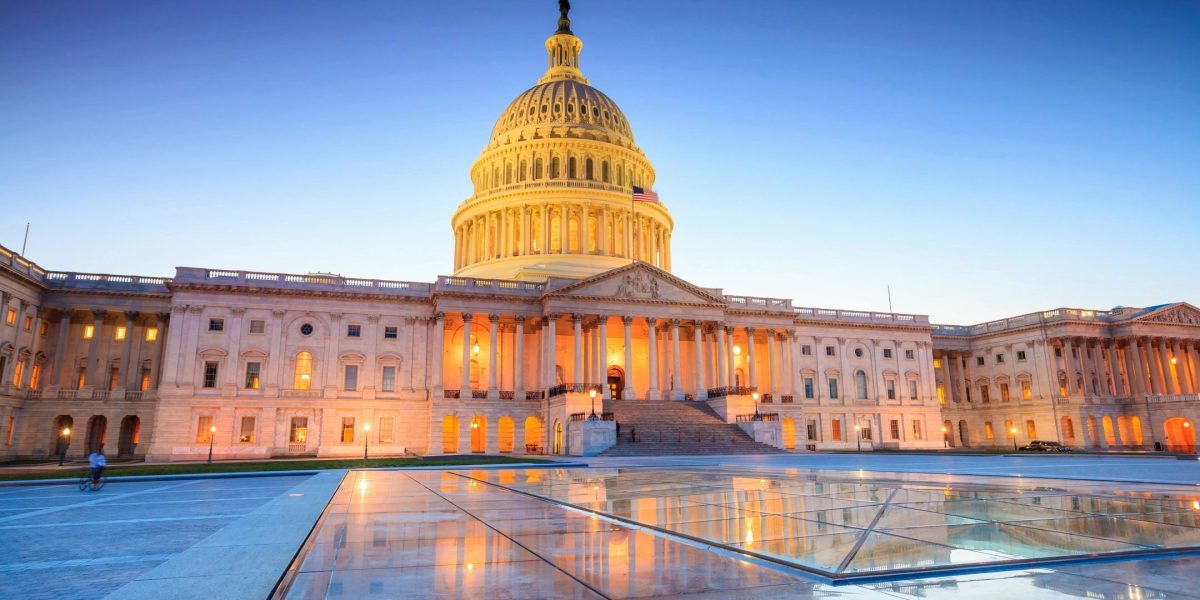An Examination of Climate Policy
Climate change is not a new issue. Rising temperatures began in the 1950s and have had a severe impact over the past 70 years (Pidcock, 2019). Over the past few decades, melting glaciers, intense droughts, heavy precipitation and flooding, rising sea levels, and warmer oceans have had detrimental effects on not only the planet we live on but also the societies that we live in. The clock is ticking, and we must address these issues as quickly as possible.
One of the ways to address these issues in a manner that has a large-reaching effect is through legal policy. While America has no shortage of policies that pertain to climate change, are these policies effective at creating long-term change and halting climate change, or are they simply in place to mitigate damage that will continue to be done?
The EPA: Environmental Policy Champion?
The first example of how American environmental policy is indeed working to create preventative measures to quell the climate crisis comes at the hands of the Environmental Protection Agency (EPA), which has been tackling the daunting task of solving climate change for decades, and their work has been showing progress. Specifically, the issuance of the Phasedown of Hydrofluorocarbons Final Rule outlined goals to phase down the USA’s production and consumption of hydrofluorocarbons (HFCs) by 85% over the next fifteen years, as mandated by the AIM act. Since HFCs (specifically HFC-23) is the main contributor to global warming, this global phasedown is expected to avoid up to 0.5 degrees Celsius of global warming by 2100 (Climate Change Regulatory Actions and Initiatives), which is a significant win in the battle to slow global warming.
Environmental Police
The EPA has not simply stopped at enacting policy. They have also been enforcing it by targeting companies that do not adhere to its standards with the chemical manufacturer Chemours being a recent example. Chemours previously voluntarily pledged to eliminate 99% or more of its emissions of HFC-23 from its Louisville Works chemical plant by the end of 2022 but didn’t follow up on their offer, causing the EPA to step in and put pressure on the company (Weisbrod 2021).
Presidential Approval
The EPA is not the only government entity to be implementing meaningful climate policy aimed to curb the problem of global warming and not just mask its effects. There is direct action coming from the Executive Branch, where President Biden has made good on his campaign promises to address climate change. He has been empowering American workers and businesses to lead a clean energy revolution that achieves a carbon pollution-free power sector by 2035 and puts the United States on an irreversible path to a net-zero economy by 2050. (The United States Government, 2021). The ultimate goal is to reach net zero by 2050 and eventually, begin reducing the climate back to its original state soon after that. In furtherance of this goal, governmental and intergovernmental organizations have allocated $321 billion in climate finance from public sources, accounting for 51% of global commitments (Burg, 2022).
Congressional Action
Administrative polices and executive aaction are not the only form of governmental intervention when it comes to climate reform. Congress has played a significant role in implementing climate policy. Specifically, the Clean Air Act, which from 1970 to 2020 has redacted the combined emissions of the six most common pollutants (PM2.5 and PM10, SO2, NOx, VOCs, CO, and Pb) by 78% and airborne lead pollution, a widespread health concern before the EPA phased out lead in motor vehicle gasoline under the Clean Air Act, now meets national air quality standard in most areas of the country.
Future-facing Policy
In addition to allocating funding necessary to address climate reform, the government continues to introduce new policies that advance pro-environmental action. In particular, they are introducing policy calling for more efficient modes of transportation with electric engines, creating new eco-friendly infrastructure, and advancing the philosophy of a “green economy.” While the effects of these efforts may not be immediate, they do show a commitment by our government to look toward creating policy that introduces economic, educational, and social elements that spark interest and action in climate reform.
A Nob to Prevention
After analyzing the legal policies and understanding some of the rules and regulations implemented in the United States to combat the changing climate, it is evident that more money is put into solving climate change rather than mitigating the aftermath.
Works Cited
Benshoff, L. (2022, April 7). The future cost of climate inaction? $2 trillion a year, says the Government. NPR. Retrieved August 13, 2022, from https://www.npr.org/2022/04/07/1091258821/the-future-cost-of-climate-inaction-2-trillion-a-year-says-the-government
Burg, N. (2022, April 28). Who funds the fight against climate change? Means and Matters. Retrieved August 1, 2022, from https://meansandmatters.bankofthewest.com/article/sustainable-living/taking-action/who-funds-the-fight-against-climate-change/#:~:text=2019%2F2020%20CLIMATE%20INVESTMENT%3A%20%24321,percent%20of%20total%20global%20commitments.
Childress, S. (2012, October 23). Timeline: The politics of climate change. PBS. Retrieved August 1, 2022, from https://www.pbs.org/wgbh/frontline/article/timeline-the-politics-of-climate-change/#:~:text=1979&text=The%20conference%20is%20considered%20the,the%20issue%20nine%20years%20later.
The Federal Register. Federal Register :: Request Access. (n.d.). Retrieved August 1, 2022, from https://www.federalregister.gov/documents/2021/12/30/2021-27854/revised-2023-and-later-model-year-light-duty-vehicle-greenhouse-gas-emissions-standards
Gross, S. (2021, June 16). What is the Trump administration’s track record on the environment? Brookings. Retrieved August 2, 2022, from https://www.brookings.edu/policy2020/votervital/what-is-the-trump-administrations-track-record-on-the-environment/
Hayes, D. J., Grannis, J., & Greenberger, S. (n.d.). Climate change: Environmental law institute. Climate Change | Environmental Law Institute. Retrieved August 1, 2022, from https://www.eli.org/keywords/climate-change?gclid=Cj0KCQjw_viWBhD8ARIsAH1mCd4yVoV9JJPFk64B81AXr7Lm68LO4gbg7AVdQKKjJrsJBkX9DOfCQK0aAsrUEALw_wcB
Newburger, E. (2022, April 4). Climate change could cost U.S. $2 trillion each year by the end of the century, White House says. CNBC. Retrieved August 1, 2022, from https://www.cnbc.com/2022/04/04/climate-change-could-cost-us-2-trillion-each-year-by-2100-omb.html
Pidcock, R. (2019, May 13). Scientists clarify starting point for human-caused climate change. Carbon Brief. Retrieved August 1, 2022, from https://www.carbonbrief.org/scientists-clarify-starting-point-for-human-caused-climate-change/#:~:text=The%20instrumental%20temperature%20record%20shows,120%20years%2C%20to%20the%201830s.
United States Environmental Protection Agency. (n.d.). Climate Change Regulatory Actions and Initiatives. EPA. Retrieved August 1, 2022, from https://www.epa.gov/climate-change/climate-change-regulatory-actions-and-initiatives#:~:text=On%20September%2023%2C%202021%2C%20EPA,of%20global%20warming%20by%202100.



